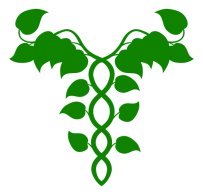Lutein
the case of too much of a good thing

. Striking the right balance between lutein dosage and eye health
Lutein supplements are often prescribed by ophthalmologists to preserve eye health and prevent deterioration leading to age-related macular degeneration
The patients that have been prescribed lutein often take more lutein 0than required, believing that more is good. But a recent case study published in JAMA Ophthalmology has revealed the side effects of taking more supplementation than the prescribed amount.
Excess of Lutein Causes Crystal Deposits on the Macula of Retina
In the case report, Paul Bernstein, M.D., Ph.D. describes an occurrence when a patient had crystal deposits on the macula of both eyes. A follow-up revealed that the patient had been taking a lutein-rich diet and lutein supplements for the past eight years. The total amount of lutein she was taking was more than twice the amount recommended for an AMD patient (10mg per day).
Taking more supplements than what the body needs is not a good practice—something that must be discouraged as it is a popular belief.
How Does Lutein Work?
Lutein is a xanthophyll (a type of carotenoid), which are the compounds responsible for the yellow (orange-red in high dosages) pigments in vegetables and fruits. They are also present in high quantities in dark green vegetables like kale, spinach and broccoli. In the human eye, it is present in large concentrations in the macula, giving the macula lutea its characteristic yellow color.
In plants, lutein works by absorbing excess light to prevent sunlight damage to the plants. In the human eye, the xanthophyll functions as an antioxidant as well as a filter to protect eye tissues from the damage caused by sunlight. In a study published in Archives of Biochemistry and Biophysics, the researchers concluded that lutein filtered the short-wavelength light and thus prevented the production of free radicals in the choroid (blood vessels between the retina and sclera) and the retinal pigment epithelium (pigmented cells between retina and choroid).
A significant amount of research has found evidence that higher consumption (within the recommended dosage) of lutein was associated with a lower incidence of AMD.
And considering that the incidence of AMD is going to triple by 2025, as predicted by the American Optometric Association, taking a lutein-rich diet is a safe option to reduce light sensitivity, glare and eye fatigue, to strengthen eye tissues, and to aid acute vision. That said, it is never a good option to exceed the lutein supplementation than the recommended dosage.
What is the Recommended Dosage of Lutein?
While researchers at Harvard University have found that a daily dose of 6 mg of lutein can lower the risk for macular degeneration by about 43%, there is no specific recommended dosage for this xanthophyll.
The good news is that doctors today can now perform a macular pigment optical density test (MPOD) to measure the macular pigment levels of lutein in the eyes, and can recommend a dosage required for the body as per the existing lutein levels, the genetic predisposition, individual responses and lifestyle parameters unique to the patient.
Foods with High Lutein Content
Here is a chart of the foods rich in lutein.
FOOD SERVINGS AMOUNT
KALE 1 CUP RAW 22
TURNIP GREENS 1/2 CUP COOKED 9
COLLARD GREENS 1/2 CUP COOKED 8.2
SPINICH 1 CUP RAW 6.2
BROCCOLI 1 CUP COOKED 3.3
BRUSSELS SPROUTS 1 CUP COOKED 2
CORN 1 CUP COOKED 1.1
GREEN BEANS 1 CUP 0.8
EGGS 2 WHOLE 0.3
ORANGE/PAPYA 1 MEDIUM 0.2
Food Serving Amount in mg Kale 1 cup (raw) 22 Turnip greens ½ cup (cooked) 9 Collard Greens ½ cup (cooked) 8.7 Spinach 1 cup (raw) 6.7 Broccoli 1 cup (cooked) 3.3 Brussels Sprouts 1 cup (cooked) 2 Corn 1 cup (cooked) 1.4 Green beans 1 cup 0.8 Eggs 2 whole 0.3 Orange/ Papaya 1 medium 0.2
The safest route is to follow the doctor’s prescription of the dosage. Going back to the case study of the patient with crystal deposits, when she followed the doctor’s prescription of quitting lutein supplements and only taking nutrition from lutein-rich foods, the crystals in her eyes disappeared.
Lutein is certainly beneficial for the eyes, but too much lutein is not.

















